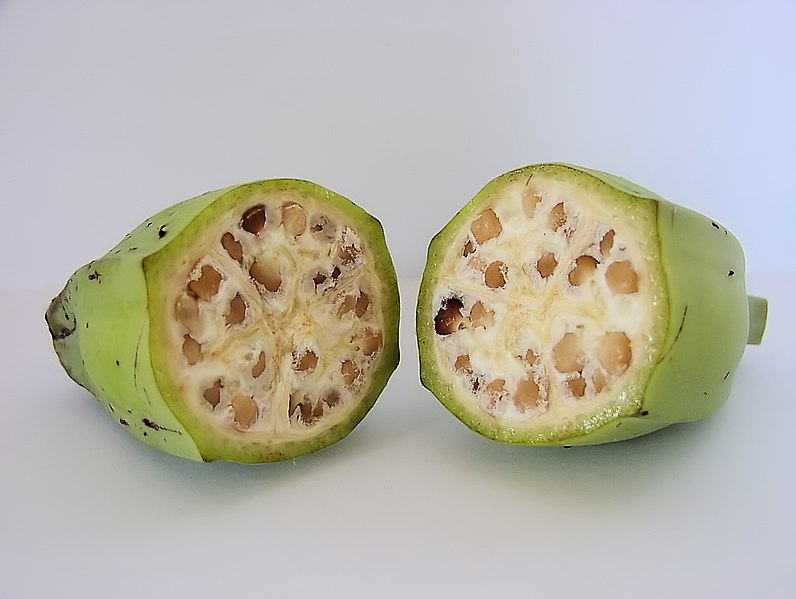Evolving Bananas

Wild Banana
I recently learned that atheists are wrong, and god has to exist because bananas are easy to eat. Link. But some nagging doubt in the back of my mind stuck around. "That just can't be true." I thought. So, rather than resorting to logic, which was my original defense, I have been tipped off to a bit of history that I find particularly crucial in this particular case.
The particular variety of banana that was most recently drafted into the army of god is a mutant. The cultivation of bananas goes very far back into human history. The first mention of a banana occurs around 600 B.C.E. in a Buddhist text. If you're keeping score this is also hundreds of years before Christianity evolved. Anyway, the variety of bananas we consume are cultivated mutations on the banana genome.
From About: Bananas
Historical bananas were not the sweet yellow banana we know today, but the red and green cooking variety, now usually referred to as plantains to distinguish them from the sweet type.
The yellow sweet banana is a mutant strain of the cooking banana, discovered in 1836 by Jamaican Jean Francois Poujot, who found one of the banana trees on his plantation was bearing yellow fruit rather than green or red. Upon tasting the new discovery, he found it to be sweet in its raw state, without the need for cooking. He quickly began cultivating this sweet variety.
More smoke for the gun from Wikipedia
While the original bananas contained rather large seeds, triploid (and thus seedless) cultivars have been selected for human consumption. These are propagated asexually from offshoots of the plant. The plant is allowed to produce 2 shoots at a time; a larger one for fruiting immediately and a smaller "sucker" or "follower" that will produce fruit in 6–8 months time. The life of a banana plantation is 25 years or longer, during which time the individual stools or planting sites may move slightly from their original positions as lateral rhizome formation dictates. Latin Americans sometimes comment that the plants are "walking" over time.
Cultivated bananas are parthenocarpic, which makes them sterile and unable to produce viable seeds. Lacking seeds, another form of propagation is required. This involves removing and transplanting part of the underground stem (called a corm). Usually this is done by carefully removing a sucker (a vertical shoot that develops from the base of the banana pseudostem) with some roots intact. However, small sympodial corms, representing not yet elongated suckers, are harder to transplant and can be left out of the ground for up to 2 weeks; they require minimal care and can be boxed together for shipment.
So, the bananas that god allegedly made for us humans to eat with ease are not even naturally viable as a species. They had to evolve before they could even get to that state. Not that that PROVES anything, except that humans also eat pineapples and coconuts.
No comments:
Post a Comment